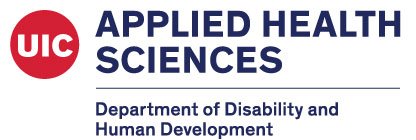We all have different sensory profiles. Maybe you feel energized when the sun is shining, relaxed when you chew gum, stressed in loud places, or calm when given a tight hug. These preferences have an impact on the kinds of activities and experiences we seek out or avoid every day. While 69-90% of children with Autism Spectrum Disorder (ASD) experience sensory processing challenges, 5-16% of “neurotypical” children do as well. The evidence suggests that in young children, this is related to problems with toileting.
What sensory characteristics of toileting could be uncomfortable?
· The temperature, texture, or shape of the toilet seat
· The sound or splash of flushing
· The feeling of urinating or defecating
· The smell
· The sound or feeling of hand dryers
· The lighting
· The sound and feeling of the sink water
· The feeling of wiping
Overall, the bathroom can be a sensory-overloading place for anybody, child or adult! It’s no surprise that 9-29% of elementary-age children experience problems with toileting.
What problems with toileting are common for these children?
· Constipation
· Toileting refusal
· Abdominal pain
· Fecal incontinence
Why does it matter?
These challenges primarily lead to a delay in potty-training, but it’s important to also consider how it’s impacting the rest of the child’s life. Does the abdominal pain or possible fear of defecating impact their play, social participation, sleep, or learning? Most likely, it’s all connected!
So, what do we do?
All professionals who work with children should recognize that anyone can experience challenges with sensory processing. Problems with toileting may not always be due to behavioral, cognitive, or underlying gastrointestinal concerns, so refer to an occupational therapist for evaluation if this sounds like a child you know!
For suggestions on how to modify the environment or tasks involved in toileting, check out this blog post:
https://www.missjaimeot.com/toileting-sensory/#sensory_processing_2
References
Ahn, R. R., Miller, L. J., Milberger, S., & McIntosh, D. N. (2004). Prevalence of parents’
perceptions of sensory processing disorders among kindergarten children. American Journal of Occupational Therapy, 58(3), 287–93.
Bakker, M., Boer, F., Benninga, M., Koelman, J., & Tijssen, M. (2010). Increased auditory
startle reflex in children with functional abdominal pain. The Journal of Pediatrics, 156 (2), 285-291.
Baranek, G. T., Fabian, D. J., Poe, M. D., Stone, W. L., & Watson, L. R. (2006). Sensory
experiences questionnaire: Discriminating sensory features in young children with autism, developmental delays, and typical development. Journal of Child Psychology and Psychiatry, 47(6), 591–601.
Beaudry-Bellefeuille, I. (2018). Examining the defecation habits of young children from a
sensory perspective (Unpublished doctoral dissertation). University of Newcastle, Callaghan, Australia.
Beaudry-Bellefeuille, I., & Lane, S. J. (2017). Examining sensory overresponsiveness in
preschool children with retentive fecal incontinence. American Journal of Occupational Therapy, 71(5), 7105220020p1-7105220020p8.
Beaudry-Bellefeuille, I., Schaaf, R. C., & Polo, E. R. (2013). Occupational therapy based on Ayres sensory integration in the treatment of retentive fecal incontinence in a 3-year- old boy (Brief Report). AJOT: American Journal of Occupational Therapy, 67(5), 601-606.
Ben-Sasson, A., Carter, A. S., & Briggs-Gowan, M. J. (2009). Sensory over-responsivity in elementary school: Prevalence and social-emotional correlates. Journal of Abnormal Child Psychology, 37(5), 705–716.
Boronat, A. C., Ferreira-Maia, A. P., Matijasevich, A., & Wang, Y. (2017). Epidemiology of functional gastrointestinal disorders in children and adolescents: A systematic review. World Journal of Gastroenterology, 23(21), 3915–3927.
Falat, J., Jaekel, M., Mooney, E., Wolpow-Gindi, M. (2019). Sensory processing difficulties and
toileting challenges: Is there an association? Unpublished manuscript, University of Illinois at Chicago.
Leekam, Susan R., Carmen Nieto, Sarah J. Libby, Lorna Wing, & Judith Gould (2007). Describing the sensory abnormalities of children and adults with autism. Journal of Autism and Developmental Disorders, 37(5), 894–910. https://doi.org/10.1007/s10803- 006-0218-7.
Little, L. M., Benton, K., Manuel-Rubio, M., Saps, M., & Fishbein, M. (2019). Contribution of sensory processing to chronic constipation in preschool children. The Journal of Pediatrics, 210, 141–145. https://doi.org/10.1016/j.jpeds.2019.03.020
Mazurek, M. O., Keefer, A., Shui, A., & Vasa, R. A. (2014). One-year course and predictors of abdominal pain in children with autism spectrum disorders: The role of anxiety and sensory over-responsivity. Research in Autism Spectrum Disorders, 8(11), 1508–1515. https://doi.org/10.1016/j.rasd.2014.07.018
Spencer, J. (n.d.). Toileting and sensory processing. Retrieved from https://www.missjaimeot.com/toileting-sensory/#sensory_processing











